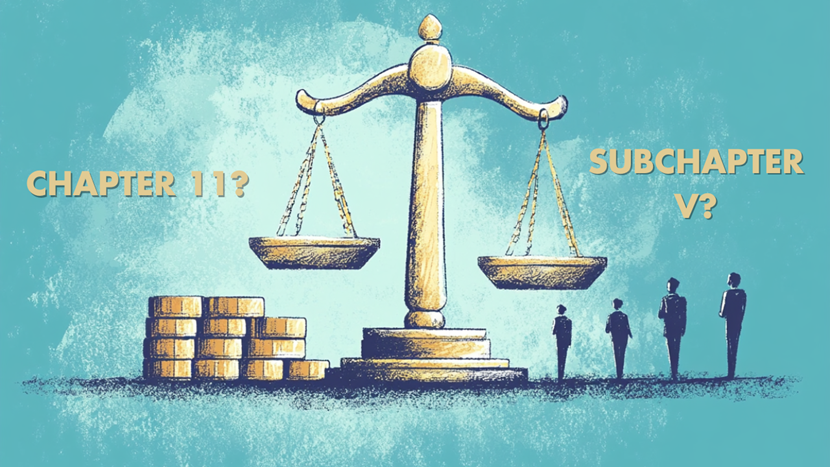Can Small Businesses Survive Chapter 11?
Mar. 24, 2025
Chapter 11 bankruptcy has long been costly and complex, especially for small businesses. Edith Hotchkiss, a Boston College professor, discusses recent reforms to the U.S. Bankruptcy Code, and the shifting balance between debtor and creditor interests.

The Challenge of Chapter 11 for Small Businesses
The U.S. bankruptcy system has historically favored larger firms, which often emerge from Chapter 11 intact—though some struggle post-bankruptcy, with re-filings dubbed "Chapter 22." Small businesses, however, face steep challenges. Many fail to reorganize due to high costs, long timelines, and reliance on individual owners or managers.
"Bankruptcy is expensive and time-consuming," Hotchkiss said at a seminar hosted by the Swedish House of Finance and the Stockholm Center for Commercial Law. "The magnitude of the expenses, which increase with the time in bankruptcy, can easily wipe out the entire value of the company."
The process also imposes heavy administrative burdens. Negotiation frictions add to the difficulty, Hotchkiss noted, particularly when creditors push for liquidation.
Subchapter V: A Solution for Small Businesses?
In 2019, the U.S. introduced the Small Business Reorganization Act, creating Subchapter V for firms with liabilities under $7.5 million. The goal: reduce costs, accelerate timelines, and improve business survival rates.
Subchapter V eliminates requirements such as disclosure statements and creditors' committees. Court deadlines are stricter, and business owners can retain equity, even if doing so violates the absolute priority rule. A court-appointed trustee mediates negotiations, Hotchkiss said.
"The key provisions here are things that very systematically reduce the cost of the process. For example, by getting rid of disclosure statements, there’s no creditors’ committee, and imposing very tight deadlines," she noted.
Impact on Reorganization Outcomes
Early research suggests Subchapter V is effective. Businesses eligible for the program are 36% more likely to confirm a plan of reorganization and exit bankruptcy 38% faster.
These improvements have not come at the expense of creditors. Unsecured recovery rates have remained stable, and there is no evidence so far that Subchapter V sustains unviable firms.
"Not only does it increase the probability of reorganization, but companies reorganize faster. We are not finding any evidence that it negatively impacts the unsecured recovery rates," Hotchkiss said. "And we also find that it doesn’t have any negative impact on post-bankruptcy survival."
Policy Changes Could Undermine Progress
In June 2024, the eligibility threshold dropped from $7.5 million to approximately $3 million, limiting access to Subchapter V. The impact remains uncertain, but some firms may now be forced into costlier traditional Chapter 11 proceedings.
"How Subchapter V works for even smaller businesses is an important question," Hotchkiss said.
Broader Trends in U.S. and Global Bankruptcy Law
Larger firms are spending less time in bankruptcy, often using pre-negotiated plans. Private equity-backed firms and distressed debt investors are playing an increasing role in restructurings.
Globally, many countries—including the UK, Spain, and the Netherlands—have introduced debtor-friendly reforms. Meanwhile, countries such as India and Malaysia have moved to strengthen creditor rights.
"Reforms globally have moved in the general direction of making reorganization proceedings more attractive from the perspective of debtors, although there are certainly counterexamples," Hotchkiss noted.
Looking Ahead
The effectiveness of bankruptcy reforms will depend on balancing debtor and creditor interests while ensuring viable firms recover. The long-term impact of Subchapter V, particularly after the threshold reduction, remains uncertain.
"What we need to watch closely is whether these reforms create more opportunities for businesses to recover—or simply shift the challenges elsewhere," Hotchkiss concluded.
